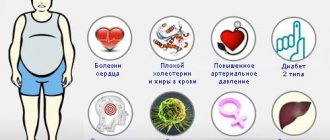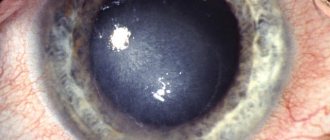Synonyms: neutrophil granulocytes, NEUT, neutrophil segmented granulocytes, polymorphonuclear neutrophils
There are six types of neutrophils depending on the stage of their maturation. Immature types include myeloblasts, promyelocytes, myelocytes, metamyelocytes and band cells. The final stage of development is segmented neutrophils (mature cells with a formed nucleus, divided into several segments).
Even at the stages of their initial development, neutrophils are able to resist infection, although mature segmented cells cope with this task much more effectively.
In blood tests of people suffering from severe infectious diseases, immature forms of neutrophils can be detected. This is explained by the fact that in the fight against pathogenic microorganisms, segmented cells die too quickly, and therefore the body is forced to use cells that are not fully mature. But in the blood of a healthy person, predominantly mature neutrophils are found, since they cope well with their task with virtually no help from their young brothers.
Figure 1. Phagocytosis. Image: mikrostoker/Depositphotos
Blood test for neutrophils
To determine the level of neutrophils, a complete blood count is used. To designate neutrophils on the analysis form, the Latin abbreviation NEUT is used, which can be expressed either in absolute (cell content per liter of blood, for example 0.04-0.3 × 109) or as a percentage. For general analysis, capillary blood is usually used. The biomaterial is collected from a finger after puncture with a scarifier. Sometimes blood is drawn from a vein - much depends on the methods the laboratory uses.
Decoding the leukocyte formula
The leukocyte formula is deciphered using a hemometer. Whether band neutrophils are decreased or, conversely, increased, has important diagnostic significance. If a shift to the left is observed, this indicates the growth of immature cells, and to the right indicates an increase in mature cells. Thus, with a shift to the right, radiation sickness, anemia, kidney and liver disease are suspected. And the presence of a large number of immature cells in the blood is characteristic of malignant tumors and severe inflammatory processes.
When studying a blood test, all indicators are considered. For example, if band neutrophils are reduced, and monocytes and lymphocytes are increased, then this is a sign of an acute infection of viral origin. And if lymphocytes and neutrophils are low or the former are within normal limits, then this indicates the presence of a chronic viral infection. Another interpretation is known - such indicators are temporary and are a consequence of a previous viral infection.
Often, a band neutrophil count of zero indicates an indolent or chronic infection, such as sinusitis or laryngitis. If a zero indicator of band neutrophils is detected, the reason lies in the following:
- viral and bacterial infections;
- anemia;
- exposure to radiation;
- toxic effects of certain drugs.
Indicators of band neutrophils allow the doctor to see how the bone marrow works.
Indications for analysis
A general blood test is the most common hematological test, so the range of indications for its use is wide. Neutrophils are a type of white blood cell whose main task is to destroy pathogenic microorganisms. Therefore, the main goal of the analysis for the content of neutrophils is to identify potentially dangerous conditions accompanied by infectious and inflammatory processes. In other words, a blood test for neutrophils can be informative both for colds and for kidney or liver diseases.
When is a test ordered?
Band neutrophils can be increased or decreased in patients of different genders and ages.
However, the study is prescribed if there are specific indications in the form of various symptoms and signs of diseases:
- Colds and inflammatory pathologies at the initial stage.
- Increased fatigue and weakness that does not disappear after a long rest.
- Loss of appetite and weight loss for no apparent reason.
- Decreased concentration and memory impairment.
- Dry skin, bleeding gums.
- Indigestion.
- Increased body temperature in the absence of other symptoms of the disease.
- Inflammatory pathologies of the liver, pancreas, gall bladder.
- Kidney diseases in acute and chronic stages.
- Suspicion of acute respiratory tract diseases.
- Oncological diseases in latent form.
- Infectious pathologies of the digestive tract.
- Blood pathologies characterized by a decrease in the level of red blood cells and hemoglobin.
Diagnostics can be prescribed for preventive purposes, which makes it possible to detect abnormalities at the initial stage. This analysis is a standard examination method, therefore, immediately upon admission of a patient to a hospital in any department, blood is drawn and tested. Thanks to the simplicity and speed of diagnostics, it is possible to identify deviations on the day the biomaterial is submitted.
Preparing for analysis
The study is carried out in the morning on an empty stomach, since food intake causes an increase in the number of neutrophils in the blood. Dinner on the eve of the test is allowed no later than eight o'clock in the evening. 2 days before the study, the patient should follow the following preparation rules:
- stop drinking alcohol;
- limit the consumption of spicy, fried and fatty foods;
- Avoid heavy physical activity and nervous stress.
The morning before the test you should not smoke. It is allowed to drink pure still water.
Figure 2. Preparation for donating blood for analysis.
Some features of the decrease in band neutrophils
Band neutrophils are immature forms of blood cells. Literally a few hours after their origin, they become mature, i.e. segmented. In infants, normal levels range from five to twelve, and in adults - from one to six percent. Among the reasons for the decrease in band neutrophils in a child are:
- excessive physical activity;
- genetics;
- lack of folic acid and cyanocobalamin;
- hormonal imbalance;
- severe stress;
- lead intoxication;
- radiation;
- bad environment;
- the effect of some drugs.
The following diseases also help reduce them:
- autoimmune diseases;
- bone marrow diseases;
- viral and severe bacterial infections;
- erythremia;
- lymphocytic leukemia in chronic form;
- splenomegaly.
Normal levels of neutrophils in the blood
The number of neutrophils in the blood is approximately 40-70% of the total leukocyte mass in both men and women.
When conducting research, experts primarily pay attention to the content of neutrophils at the middle and full stages of maturation, that is, band and segmented forms. Young cells are of interest if the development of the spread of inflammatory processes is suspected. The table shows the leukocyte formula, which reflects, among other things, the number of neutrophils. Table 1. Leukocyte formula with the number of neutrophils
| Index | × 10x9/l | Share as a percentage of the number of leukocytes | |
| Neutrophils | segmented | 2.0 – 5.5 | 40 — 70 |
| stab | 0.4 – 0.3 | 1 — 5 | |
| Basophils | Within 0.062 | Within 1.0 | |
| Eosinophils | 0.02 – 0.3 | 0.5 — 5 | |
| Lymphocytes | 1.0 – 3.2 | 17 — 38 | |
| Monocytes | 0.07 – 0.5 | 3 — 12 | |
In children of the first year of life, the number of band neutrophils can reach five, then the maximum value is limited to four, as in adults. The smallest number of segmented neutrophils is observed in children 4-5 years old (35-55%). In other age groups it varies between 40-70%.
Note to the patient
It is important to follow basic hygiene rules. Wash your hands before eating. In crowded places you must wear a protective mask. This will help prevent the development of diseases. It is advisable not to communicate with those people who suffer respiratory infections.
If, with low neutrophils, the patient’s general health has deteriorated and the body temperature has increased significantly, then treatment is carried out in a hospital setting under the strict supervision of the attending physician. In this case, self-medication is prohibited, since this can cause the development of serious complications and worsen the general health of the patient.
Now you know that if the test results show a low percentage of neutrophils and an increased percentage of lymphocytes, then these indicators could be influenced by several factors. And only after a complete examination of the patient can we accurately answer what exactly provoked this phenomenon.
Causes of increased neutrophils in the blood
Elevated neutrophil levels can indicate a wide range of illnesses and injuries. Very often, the cause of an increase in neutrophils in the blood is infectious processes of bacterial origin, which can be either focal or generalized (spread throughout the body).
Reasons for increasing the level of neutrophils in the blood:
- upper respiratory tract infections (laryngitis, pharyngitis, sore throat);
- pneumonia;
- kidney diseases;
- diseases of the cardiovascular system;
- local purulent-inflammatory foci (abscesses, abscesses);
- viral diseases (measles, mumps, chickenpox, rubella, etc.);
- oncological diseases;
- taking hormonal medications;
- infections of bacterial origin (dysentery, tuberculosis, cholera, anthrax, etc.);
- poisoning with toxic substances;
- processes of tissue necrosis (gangrene, myocardial infarction, major burns);
- injuries of large organs;
- fractures;
- damage to the skin (cuts, abrasions, etc.);
- gout;
- sepsis (blood poisoning).
Eating canned foods can also cause an increase in neutrophils. This applies to those products in which there are no longer living bacteria left, but the toxic products of their vital activity have been preserved.
Functions of band neutrophils
The main functions of immature neutrophils:
- Biological. The cells supply the necessary enzymes to the affected area and thereby activate the process of resorption of necrotic tissue.
- Protective. As a result of phagocytosis, enzyme substances are synthesized, which become an obstacle to dangerous phenomena that threaten the individual’s body.
- They supply antitoxic substances to the blood.
- Participate in fibrinolysis.
It is important to remember that reduced band neutrophils cannot fully perform the necessary functions.
Causes of low levels of neutrophils in the blood
A decrease in the level of neutrophils in the blood is called neutropenia. The cause of this phenomenon can be diseases of various natures, as well as taking various medications.
Reasons for decreased neutrophil levels:
- infectious diseases (viral hepatitis, typhus, influenza, mononucleosis, etc.);
- autoimmune diseases (rheumatoid arthritis, systemic vasculitis, Crohn's disease, etc.);
- radiation sickness;
- blood diseases (leukemia, hemolytic and dyserythropoietic anemia).
Separate mention should be made of medications: taking them can also cause neutropenia. This is a very broad group of medications, which includes:
- NSAIDs (non-steroidal anti-inflammatory drugs: analgin, amidopyrine);
- antibacterial drugs (cephalosporins, penicillins);
- drugs to lower sugar (chlorpropamide);
- thyreostatic agents (propylthiouracil, Mercazolil);
- antimalarial drugs of synthetic origin (hydroxychloroquine);
- sulfonamides (sulfapyrazone; sulfasalazine);
- cytostatics (chlorambucil, methotrexate);
- antivirals (ganciclovir, zidovudine).
Figure 3. Blood cells in a healthy person and with neutropenia. Image: Sakurra/Depositphotos
Indicator 0
There is an indicator of 0 – what does this mean? Indicator 0 in a child and 0 in an adult can most often be provoked by the following factors:
- Bacterial infections such as typhus, tularemia or chronic brucellosis.
- Viral infections that can lead to a decrease in neutrophils. In such a situation, the patient may become ill with rubella, influenza, scarlet fever, measles, diphtheria or viral hepatitis.
- Toxic effects of medications.
- Anemia can cause a lack of neutrophils in an adult or child.
- Because of radiation.
Consequences of deviation of neutrophils from the norm
A change in the level of neutrophils in the blood is a signal from the body about the presence of inflammatory diseases, injuries or poisoning. Therefore, it is necessary to accurately determine the cause of the increase or decrease in neutrophils in order to begin treatment in time or eliminate the provoking factor. If this is not done on time, the consequences can be severe (even death). The greatest danger among possible causes is infectious diseases of a bacterial nature, as well as processes of local suppuration and necrotization (death) of tissue.
What drugs do doctors prescribe?
As a rule, specialists prescribe B vitamins and those medications that contain folic acid. In some cases, among the provoking factors is damage to bone marrow tissue. Under such circumstances, the patient is prescribed medication. Most often, the doctor offers the patient Filgrastim and Lenograstim.
Many people are interested in why the percentage of neutrophils is reduced and lymphocytes are increased? In some cases, this indicates that the body is in the process of removing dead cells.
How to reduce the number of neutrophils in the blood
To reduce the number of neutrophils in the blood, it is necessary to influence the cause of this phenomenon, since there are no separate ways to eliminate it. If the increase in neutrophil levels is caused by short-term stress or increased physical activity, then no specific correction is required.
For persistent neutrophilia, depending on the disease that caused it, the following treatment methods are used:
- antimicrobial therapy - antibiotics are used for infections (amoxicillin, cefixime);
- antiplatelet therapy - in case of heart attack and a tendency to blood clots, acetylsalicylic acid and alteplase are prescribed;
- anti-inflammatory therapy - glucocorticosteroids (prednisolone) are used to reduce inflammation that provokes neutrophilia;
- chemotherapy – aimed at combating malignant tumors (cytostatics, antimetabolites).
If there is a local focus of inflammation, surgical treatment can be used. For example, it is relevant for appendicitis or abscesses. The menu should limit the amount of meat products, canned and smoked. The diet should be rich in vegetables and fruits.
To normalize the level of neutrophils in the blood, it is recommended to eat more vegetables and fruits. Photo: sommail / freepik.com
Doctor's recommendations
If the patient has a low level of neutrophils, the doctor informs the patient about lifestyle during the treatment process. First of all, it is necessary to reduce the risk of developing other diseases. It is worth paying attention to your diet. A person who has low neutrophil levels should not consume poorly processed meat products. At first, you need to boil the milk before drinking. Farm products should be excluded from your diet. It is better to buy goods from supermarkets, since products from the market often contain pathogenic microorganisms.
How to increase the number of neutrophils in the blood
To correct neutropenia, it is necessary to identify its cause. If a decrease in neutrophil levels is caused by taking medications, you should first weigh the possible risks of a decrease in neutrophil levels with the importance of the therapeutic effect of the drugs used. In extreme cases, the drug can be replaced with an analogue that does not affect the level of neutrophils in the blood. The underlying diseases that cause neutropenia are treated with antibiotics, anti-inflammatory and antiviral drugs.
It is recommended to consume the following products:
- any meat dishes (it is important that they are all well thermally processed);
- hard boiled eggs;
- pasteurized milk;
- cheese (except for varieties with mold);
- potato;
- rice;
- pasta;
- fruits and vegetables;
- alcohol only in consultation with a doctor.
Careful heat treatment of meat and eggs is necessary in order to exclude the possibility of bacteria and microbes entering the body, which actively multiply in poorly fried or undercooked protein dishes.
Features of the infectious process against the background of neutropenia
As noted above, neutrophils are the primary unit that responds to a foreign agent. When an infection occurs, they rush to the site of its location and form a focus of inflammation, preventing the spread of microbes. Pus in the wound, intoxication and inflammatory syndrome are the results of the struggle of neutrophils with a foreign agent.
Pus is a product of the breakdown of spent granulocytes that have lysed a foreign object.
The disease can be asymptomatic if a person initially has neutropenia. Subsequently, the infection will quickly spread throughout the body, leading to sepsis.
Neutropenia may first appear clinically:
- purulent-necrotic sore throat;
- stomatitis and gingivitis;
- cystitis and urethritis;
- asymptomatic inflammatory process with subsequent development of osteomyelitis, abscesses and subsequently sepsis.
It is very important for patients with neutropenia not to come into contact with infectious patients. Avoid hypothermia and drafts. Avoid places where there are large numbers of people. It is necessary to prevent seasonal infectious diseases. Microbes that are absolutely safe for a person with normal white cell counts can lead to serious consequences in patients with low neutrophils.
Most often, the primary infectious process develops on mucous membranes in contact with the external environment (purulent tonsillitis)









